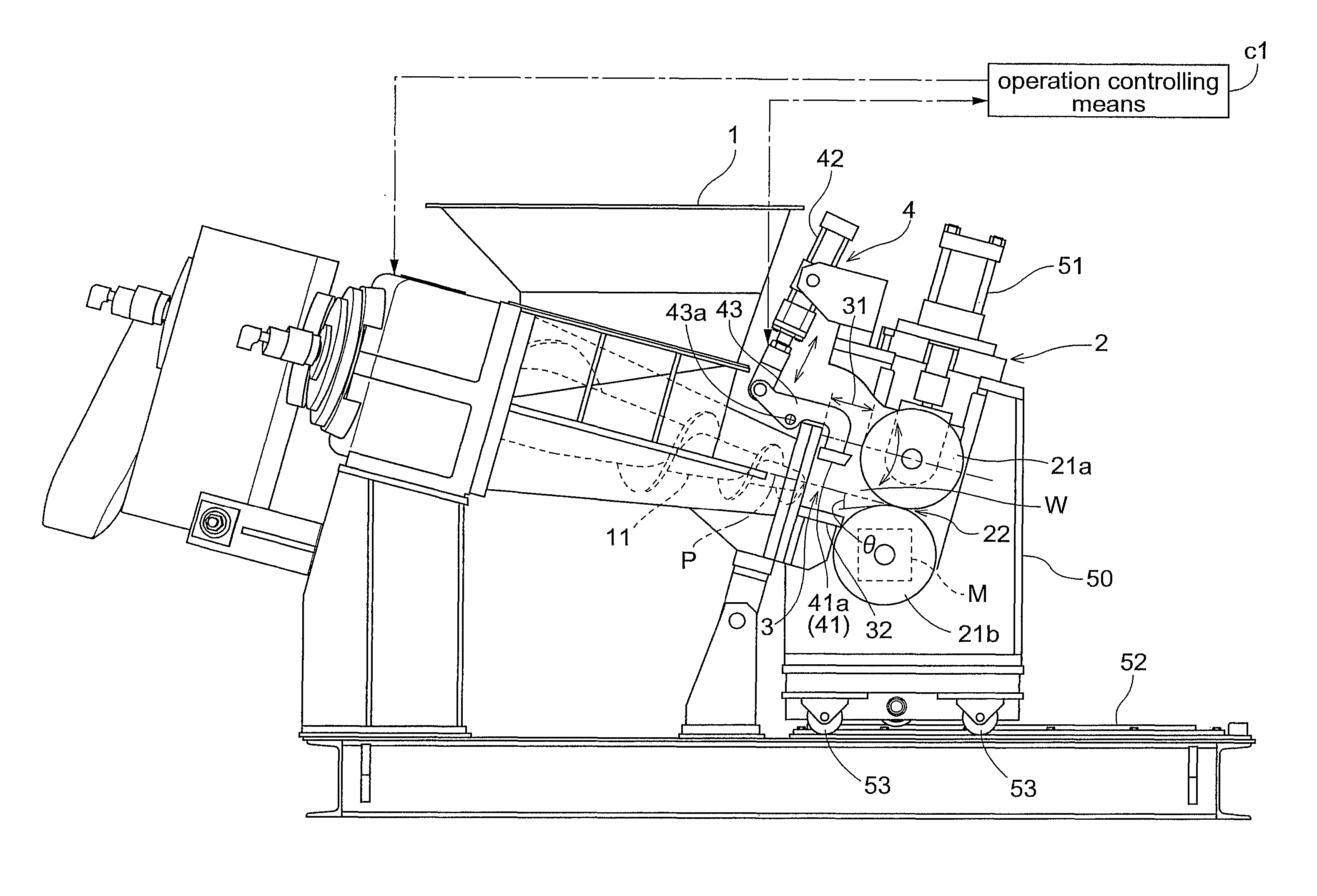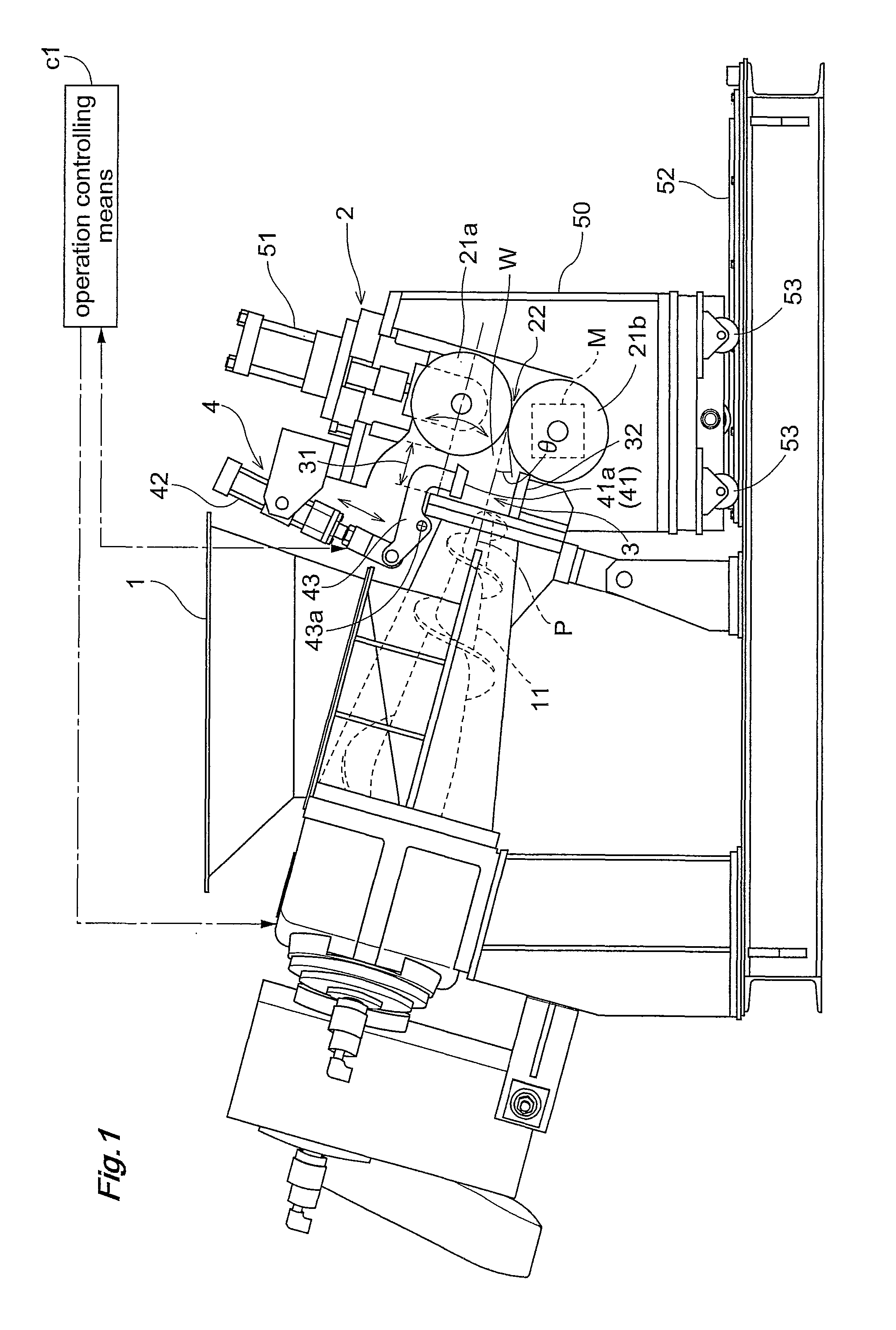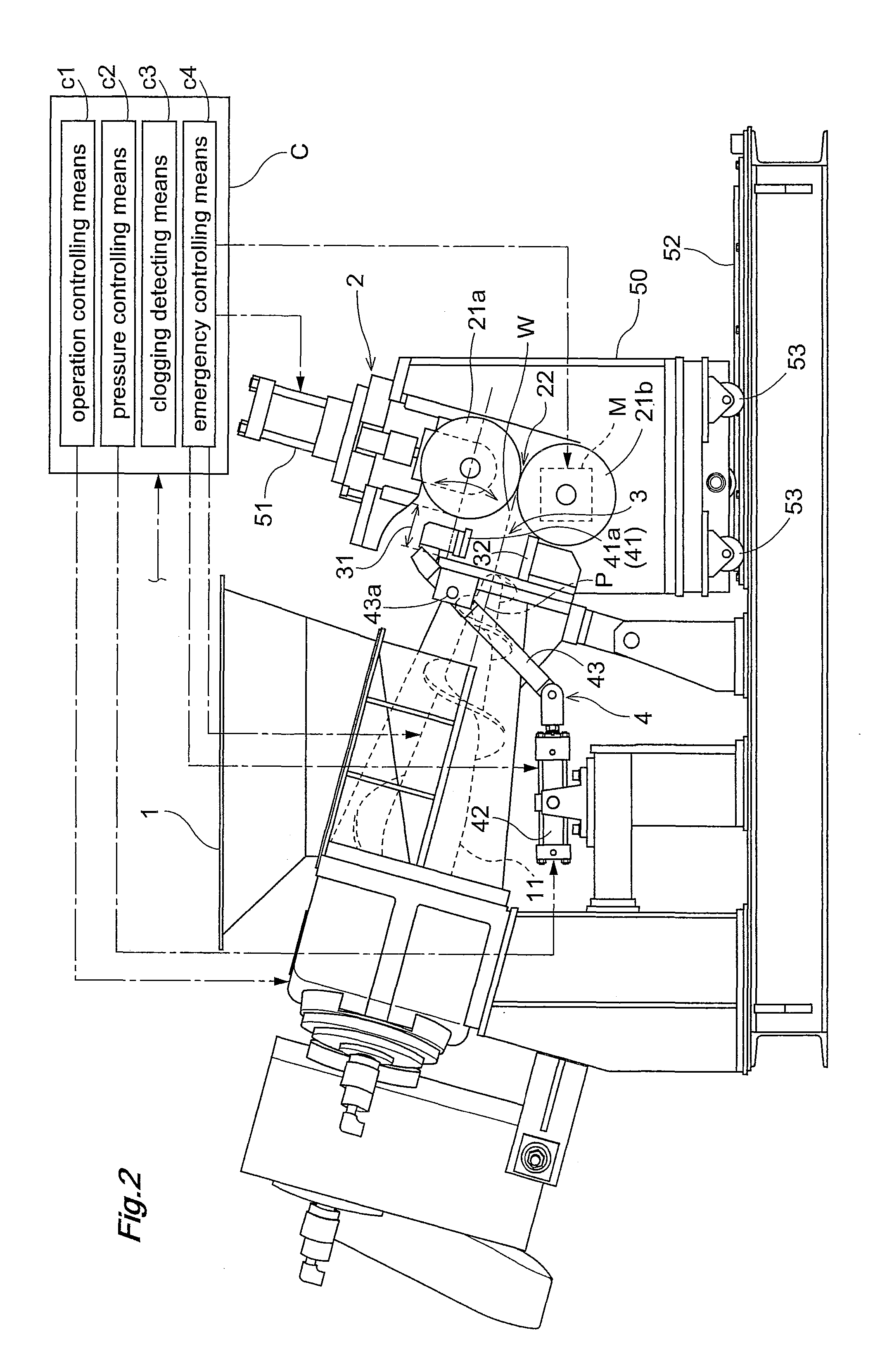Sheet forming device
a sheet forming and sheet technology, applied in the direction of dough shaping, manufacturing tools, applications, etc., can solve the problems of affecting the shape of the sheet at its opposing ends, changing the pressure, and the variation of the amount of material in the rolling unit, so as to reduce the amount of defect material, reduce the amount of material, and the effect of relatively easy sheet forming control
- Summary
- Abstract
- Description
- Claims
- Application Information
AI Technical Summary
Benefits of technology
Problems solved by technology
Method used
Image
Examples
first embodiment
[First Embodiment]
[0065]FIG. 1 shows a first embodiment of the sheet forming device relating to the present invention.
[0066]This sheet forming device includes a supplying unit 1 for supplying (extruding) plastically deformable material W, a storing unit 3 for temporality storing an amount of material W supplied (extruded) from the supplying unit 1, and a rolling unit 2 for rolling the material W stored in the storing unit 3 into a sheet form.
[0067]Like the conventional sheet forming device, in this sheet forming device, the supplying unit 1 includes an extruder 11 and the rolling unit 2 includes two rolls 21a, 21b.
[0068]In this rolling unit 2, one of the two rolls 21a, 21b is rotatably driven by a rotary drive mechanism M such as a motor and the other roll operatively coupled with the one roll via a gear is driven to rotate in operative association therewith. Alternatively, both the two rolls 21a, 21b can be driven individually by independent rotary drive mechanisms (not shown) suc...
PUM
| Property | Measurement | Unit |
|---|---|---|
| angle | aaaaa | aaaaa |
| angle | aaaaa | aaaaa |
| pressure | aaaaa | aaaaa |
Abstract
Description
Claims
Application Information
 Login to View More
Login to View More - R&D
- Intellectual Property
- Life Sciences
- Materials
- Tech Scout
- Unparalleled Data Quality
- Higher Quality Content
- 60% Fewer Hallucinations
Browse by: Latest US Patents, China's latest patents, Technical Efficacy Thesaurus, Application Domain, Technology Topic, Popular Technical Reports.
© 2025 PatSnap. All rights reserved.Legal|Privacy policy|Modern Slavery Act Transparency Statement|Sitemap|About US| Contact US: help@patsnap.com



